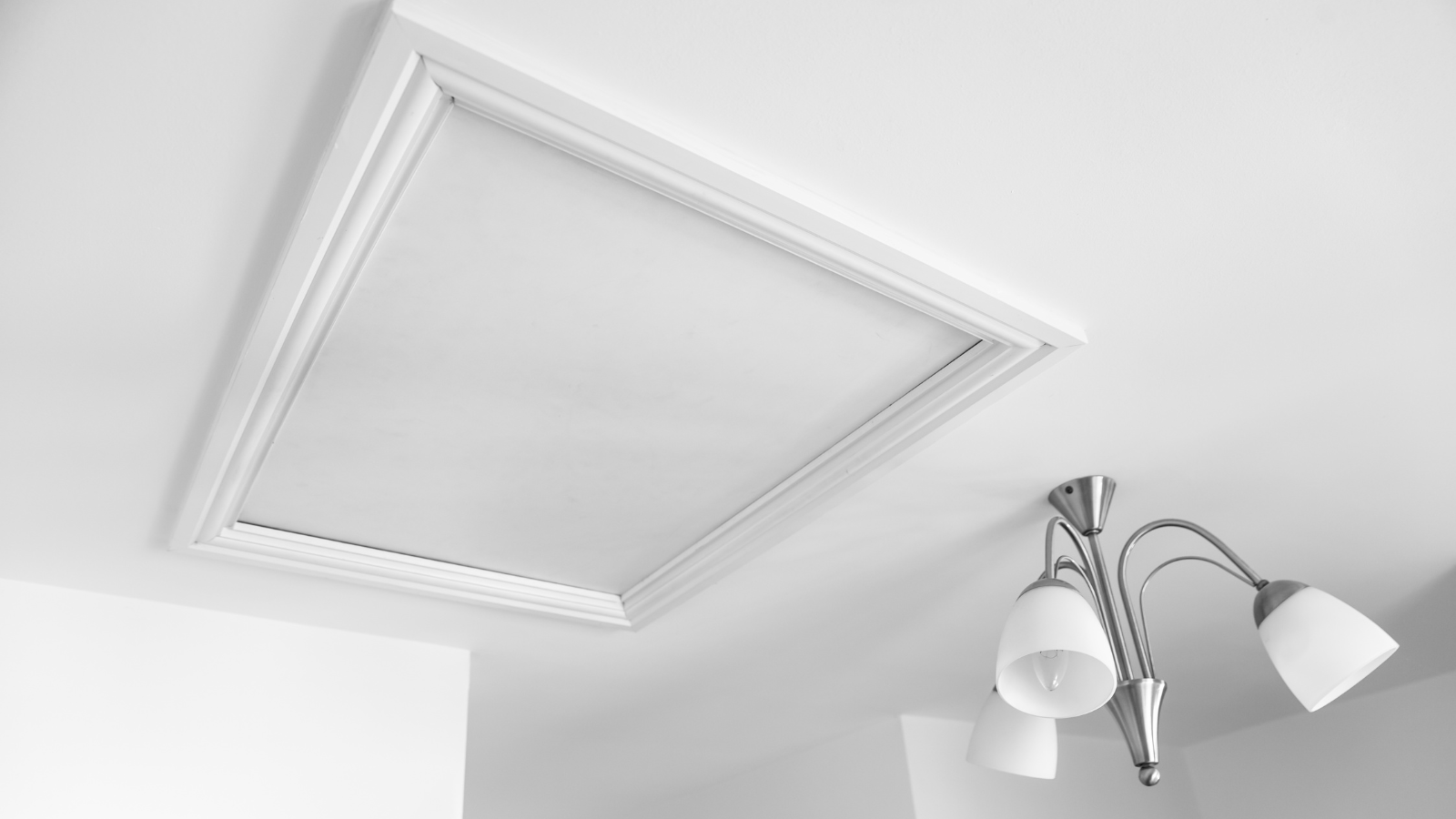One area of your home that is often overlooked is attic hatch insulation. This small opening can allow a lot of heat to escape from your home, costing you money on your heating bills.
In this post, we will discuss the importance of attic hatch insulation and how you can go about getting it installed in your home.
What does attic hatch insulation do?
The main purpose of attic hatch – or attic door – insulation is to seal the opening in your attic so that heat cannot escape. This will help to keep your home warm in the winter and cool in the summer.
Home have varying levels of insulation, and homeowners should understand the quality of their existing insulation.
If you live in an older home, chances are your attic hatch is not as well insulated as it could be, and you could be experiencing significant heat loss, especially in the winter months.
When you might need to replace attic hatch insulation
Attic hatches can be a source of substantial air leakage within homes.
If you have noticed your heating and cooling bills increasing, you feel chilly drafts in the cooler months, or experience excessively hot upper bedrooms in the summer, you may need to have your attic inspected.
A DIY trick for homeowners to see if your attic hatch is properly sealed is to light a stick of incense and hold the smoky tip up to the gaps between the closed hatch and your ceiling, paying close attention to how the smoke behaves. If the smoke is dancing erratically, this suggests significant air penetration coming through the hatch.
You can also open up the attic hatch and inspect the state of the existing weatherstripping. If it is cracked or distorted, it likely needs to be replaced.
The easiest way to determine if your home needs new attic hatch insulation is to request a no-obligation, general attic inspection from an experienced local contractor.
Options for Installing Attic Hatch Insulation
There are a few different options for upgrading your attic hatch insulation. One option is to hire a professional contractor to come and do it for you.
Another option is to purchase a pre-made insulation kit from your local hardware store. These kits usually contain everything you need to get the job done, including rigid foam board and weatherstripping. We suggest asking your local hardware store for advice on this option.
If you are feeling handy, you can also try doing it yourself. There are several methods for installing attic hatch insulation, and we always recommend doing thorough research before buying materials.
The DIY guide in this article should be sufficient for the vast majority of lay-in attic hatches. There are many other resources available online that can help walk you through the process step-by-step if your attic hatch or attic door is built differently.
No matter which method you choose, adding attic hatch insulation is a great way to improve your home’s energy efficiency and save money on your energy bills.
DIY Attic Hatch Insulation
Essentially, insulating your attic hatch boils down to three main tasks:
- Applying caulk or spray foam to wooden trim of attic hatch, creating an inner seal.
- Sealing air gaps between the door and the ceiling with weather stripping.
- Insulating the rear of the hatch itself with a rigid foam board and/or fibreglass batt insulation, up to the recommended R-rating in your region.
There are different types of attic hatches and attic doors found in homes, such as drywall lay-in attic hatches, door-type attic hatches, and ladder attic hatches. This guide will focus on the standard lay-in attic hatches found in most homes.
Pro-tip: There are many products available that can help you insulate your attic hatch, and many of them do work well. However, some products should be avoided, depending on the type of attic hatch you have. If you’re confused by the options available, it may be better to have this job handled professionally by a qualified contractor like Panda Insulation.
Step 1: Purchase Materials
Once you have determined that your attic hatch needs to be insulated, you will need to purchase the required supplies.
Materials you need:
- Tape measure
- Utility knife or scissors
- Water-based construction adhesive – that can be used with foam
- Silicone-based caulk or a bottle of insulating foam
- Caulking gun
- Weather seal, ideally peel-and-stick
- Ladder
- Two-inch rigid foam board
- Stapler (if you are not using peel-and-stick weather strips)
For personal protection, we also suggest gloves, safety glasses, and a face mask. This is a relatively safe job, but
Selecting Rigid Foam Board
We recommend two-inch rigid foam board, preferably made from polyiso. Polyiso has the highest R-value per inch of any rigid board insulation.
The rigid foam board should be cut to the size of your removable attic hatch panel. We suggest cutting it to slightly under the size of the panel, so you will still be able to easily remove the attic hatch in future.
Rigid foam board is often available pre-cut and can be purchased at most home improvement stores or online retailers. Make sure to carefully measure your attic hatch panel first.
Purchase enough rigid foam board to achieve an R-rating of at least R-50.
Selecting the Right Weather Stripping
Depending on the top of attic hatch you have, you will need to purchase the correct type of weather strips. The type of weather strip you needs depends on the size of the gap you need to fill, and the style of attic hatch youth home has.
For a typical lay-in attic hatch with a wood stop protruding, a rubberized “D” style strip is appropriate. The base of the “D” is adhesive, and will rest on the wood trim.
For attic hatches that do not have a wooden trim protruding out past the framing, you will need to use a door seal and staple it into place flush against the wall. Other models allow you to screw in the seal.
Step 2: Measure your attic hatch and cut your rigid foam board to size
Grab a ladder and remove your attic hatch. Write down measurements for each side of the attic hatch.
When opening your attic door/hatch, we recommend wearing safety glasses. Dust and wood particles can fall down on your head when opening up the attic hatch (assuming it has not been disturbed in some time). Protect your eyes! After this stage, you can safely proceed without safety glasses.
Clean up any blown insulation materials resting on top of the wood stop (the area where the attic door rests) so you have a clear surface for applying caulk, weather stripping, and/or insulating foam.
Step 3: Examine Weather Stripping
If the weatherstripping is damaged or dried, remove it before replacing it. Take the weatherstripping off of the hatch frame. This process may take longer if nails or screws were securing the weatherstripping.
Step 4: Add Caulk or Insulating Foam to the Base of Wood Trim
Add caulk along the back edge of the wood stop, creating a tight seal at the base of the attic hatch opening. Feel free to use the caulk liberally at this stage. You can use your utility knife to trim any excess caulk after.
An alternative to caulk is a bottle of insulating foam sealant, available at most hardware stores for $10-$15.
Step 5: Add Weather Stripping to Gaps
Measure the lengths of weather strips you need based on the length of the wood trip around the attic hatch opening. Your weather strips should fit snugly on all four sides.
Peel and stick the weather stripping about a 1/16th of an inch behind the edge of the wooden trim.
Take care not to stretch out your seal as you’re laying it out, and do not remove the tape backing all at once — do it gradually as you work around the attic hatch.
Gently lay down the stripping and press it firmly into place.
Once applied, your weather strip should form a tight seal between the attic opening and the edge of the attic door.
Step 6: Insulate the backside of the hatch panel
Once the weather seal is installed, it is time to insulate the backside of the hatch panel that you removed in step one.
Grab your two-inch rigid foam board, cut to just under the size of your attic hatch panel.
Use a construction adhesive that can be used on foam and apply to the back of your attic hatch panel. Adhere the rigid foam board to the rear of the attic hatch panel.
Put the attic hatch panel back into place. Test for any air leaks.
What Experts Look For When They Inspect Your Attic
Attic hatches are often overlooked when it comes to energy efficiency, but as you can see, they play a crucial role in keeping your home warm in the winter and cool in the summer.
If you’d rather not go the DIY route and would rather have an expert inspect your attic hatch, here are some of the things they will assess:
- The condition of the wood stops
- Whether the weatherstripping needs to be replaced
- If there are any cracks or gaps that need to be sealed
- The type and thickness of insulation being used
- How well the hatch is fastened shut when closed.
By insulating your attic hatch properly, you can save yourself money on your energy bills and keep your home more comfortable all year round.
Why You Should Get A General Attic Inspection
Most homeowners aren’t sure what to look for when inspecting their attic and often overlook potential problems, costing them money over time.
An attic inspection can help identify potential issues, such as insufficient insulation, pests, mould, or water damage, before cause bigger problems down the road. An inspection can also help ensure your attic has the recommended R-rating for your region and that there are no air leaks.
Insulating Your Attic Hatch in Ottawa, Ontario
If you’re located in Ottawa, Ontario, Panda Insulation can handle the entire job for you: gathering the supplies, installing the insulation, and cleaning up the mess.
When you book a free, zero-obligation attic inspection with Panda Insulation, you can also receive a discounted home energy audit from Energuy, a certified partner of Canada’s Greener Homes Grant.
Here’s what one customer had to say:
Amazing fast service from start to finish for attic insulation! Honest trades people with competitive pricing. The owner took his time to evaluate my current attic situation (around 15 minutes walking around in the attic looking for signs of water damage, mould, and overall insulation condition. 30-45 minutes walking through the findings & recommended next steps). My service included new hatch access for the garage, sealing of protrusions, installation of new rafter truss vents, and adding blown-in insulation. I wish they offered more services. Thank you, Panda Insulation!
Genevieve in Ottawa, ON
Final Thoughts
As you can see, there are many benefits to having a properly insulated attic hatch. If you’re unsure how to insulate your hatch or if you would like a professional opinion, don’t hesitate to contact Panda Insulation for a free, zero-obligation estimate. We would be happy to help you make your home more comfortable and energy-efficient.
Thank you for reading! We hope this article was helpful. Please feel free to share it with your friends and family if you find it useful.




